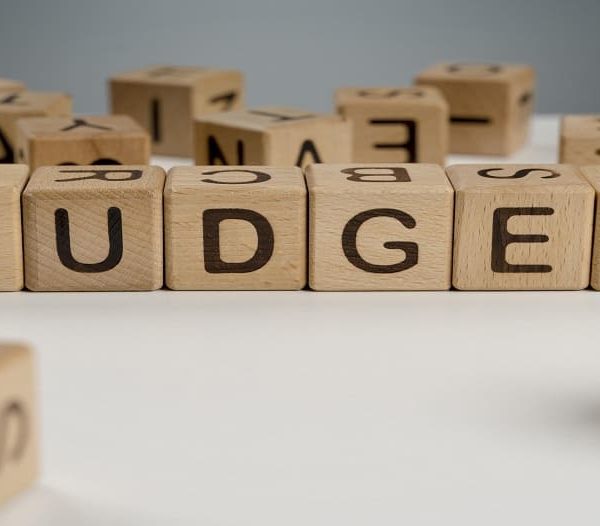What is public expenditure? Are you aware of the public expenditure of India? Do you know how it works? Who controls public expenditure in India? What are the principles of public expenditure and how does it affect the economy? What are the types of public expenditure? Get familiar with the functionings, the meaning of public expenditure, and know about one of the most debatable topics of economics here.
What is Public Expenditure?
Public authorities such as the Central government, state government, and local governments set aside a sum of money that is to be spent on the needs of the public of a particular country. These are the collective needs of the public that include facilities like infrastructure, basic healthcare, education, pensions, and security.
Public expenditures are a component of public finance that studies the spending, deficits, and taxation made by the government. Public expenditures are fused with public revenues to raise revenues for public welfare, creating a balance in the use of resources.
Public expenditures are supposed to be made for the welfare and well-being of the public and the country in general. It is the responsibility of the government to promote economic growth with an equitable distribution of resources through public expenditure.
One of the major effects of public expenditures includes the redistribution of resources. This ensures that the resources are distributed among the underprivileged classes and a balance is maintained in the economy.
The principles of public expenditure ensure that the government succeeds in maintaining social benefits such as equal production and distribution for the welfare of the public.
The History of Public Expenditure in India
When India became a free country, the policymakers and government decided to adopt a mixed economy model. The functioning of a mixed economy is handled by the government and private sectors. The government takes decisions regarding economic activity in socially important areas while the rest of the areas are open for public undertakings. In India, the government decided to undertake the responsibility of building the infrastructure and capital to promote the economy.
Also Read : What is Section 144 in India? Things You Need to Know for UPSC IAS Exam
The Effects of Public Expenditure
According to economist Hugh Dalton, public expenditure affects the economy in three main areas. These include production, distribution, and stabilization.
1. Production
Public expenditure affects production based on one’s potential to work and save, the inclination to work and save, and the smart utilization of resources.
- Potential to Work and Save
Public Expenditure provides economic resources that promote work among people. This leads to efficiency and an increase in production, which in turn provides a gateway for the public to save their income for an investment for a better future.
- The Inclination to Work and Save
If the government spends a considerable amount on providing better resources, it would encourage people to access those resources and work towards a goal. This inclination would promote production for a desire for a better lifestyle.
- The Utilization of Resources
The government would thus be investing in resources where the production creates maximum value. This would encourage the unproductive resources to work along with the productive resources to create more opportunities for them. This would lead to increased production value.
2. Distribution
Public expenditure aims at working towards equal distribution of resources to all sections of the society. The government achieves this by collecting funds from the sections of the society that benefit from their high incomes in the form of taxes. These funds are then used to provide basic resources and to promote growth and employment for the other sections of the society.
The government promotes growth by providing resources such as healthcare, infrastructure, and education. They promote small scale industries and encourage the public sector to employ more people at higher wages. Lastly, the government also helps the weaker sections of the society by allowing them to avail loans at low-interest rates.
Stabilization
The government works towards economic stability by keeping a balance by controlling inflation and deflation. They have to ensure that there are enough resources in stock in case there are cases of depression in the economy.
British economist John Maynard Keynes believed that public expenditure can work in times of depression. Public expenditure leads to demand which would increase employment opportunities on the part of production companies and thus lead to a balanced demand-supply chain.
Also Read : Geography Syllabus for UPSC Prelims and Mains: Insight into Geography IAS Optional
The Major Principles of Public Expenditure
The major principles or canons of public expenditure include:
1. Social Benefits
The canon of social benefits claims that the funds collected for public welfare should be used for the benefit of the collective needs of society. It should be used to promote a balance in the economy and lead to an increase in the production and distribution of goods and resources.
2. Economy
A balance in the economy should be maintained by the optimal utilization of surplus resources and avoiding wastage of resources. The government should ensure that limited resources are used wisely in a controlled manner. Government expenditure should be used in the benefit of taxpayers and increasing revenue resources.
3. Sanction
The canon of sanction claims that public authorities should seek approval of the concerned authorities before spending money. This would avoid unnecessary expenditure on the part of public authorities. The canon also states that the amount sanctioned should only be spent on resources it has been claimed for. To ensure the proper functioning of the system, yearly audits and inspections should take place.
4. Elasticity
The canon of elasticity maintains that the public expenditure should be flexible. This means that the expenditure should be maintained in a manner that the expenses can be increased or decreased if and when the situation demands so.
5. Surplus
The public expenditure should always remain in surplus. This means that the authorities should make sure that the expenditure is less than the income earned. This can be achieved by increasing the revenue or by keeping a check on the public expenditure. The canon indicated that the government should ensure they do not run out of resources at any point of time or fall into debts.
Classification of Public Expenditure
The classification of public expenditure can be done in 4 ways:
Revenue Expenditure
The revenue expenditure is funded through the current revenue of the government that includes taxes and non-tax revenues such as welfare schemes or profits, or incidental incomes.
Capital Expenditure
The capital expenditure is spent on the construction of public properties such as buildings, bridges, dams, roads, and railways. The extra expenditure is met through internal and external loans.
Development Expenditure
The development expenditure is used to maintain and improve resources for welfare development such as industrial development, educational institutes, irrigation development, and so on. These resources are meant to improve the quality of life, skill, and productivity of the public.
Non-Development Expenditure
The non-developmental expenditure is spent on defence, law and order, and civil administration. These are the sources that are responsible for the smooth functioning of a society.
Conclusion
The Central and State government are the governing bodies that control public expenditure. The government is responsible for collecting revenues and the distribution of resources in the economy. They assign these tasks to the respective candidates who every part of the expenditure is spent with utter care and control.
Also Read : Big Breaking: Will UPSC Prelims 2020 be Postponed Again?






